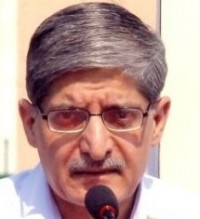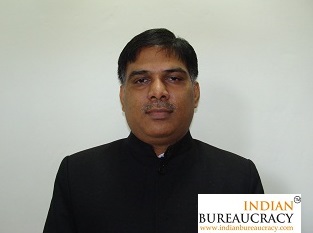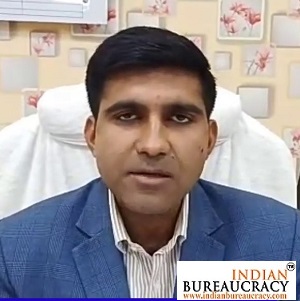There are at present over 400 nuclear power plants in the world. These plants provide less than 7% of world’s total energy supply. India’s share of nuclear power generation is just 1.2% of world’s nuclear power generation capacity, making it the world’s 15th largest nuclear power producer. India has 7 nuclear power plants(21 reactors) having an installed capacity of 5780 MW.(as in 2013).These nuclear power plants are located in six states of Maharashtra , Gujarat , Rajasthan , U.P. , Karnataka and Tamil Nadu. Out of these , only one nuclear power station is located in UP at Narora. It is operated by NPCIL and has two units of 220MW each (total 440MW).Four projects(6 units) are under construction in Tamil Nadu , Rajasthan and Gujrat ,with capacity of 4300 MW.
India gets under 2% of its electricity from nuclear power with the rest coming from coal(60%) , hydroelectricity(16%), other renewable sources (12%) and natural gas (9%). India plans to produce 25% of its electricity from nuclear power in due course(9% by 2032).
India has had many advocates for nuclear power , the most notable in the recent past being our former President , Dr. APJ Abdul Kalam who said: ”Energy independence is India’s first and highest priority. India has to go for nuclear power generation in a big way using Thorium based reactors .Thorium , a non-fissile material is available in abundance in our country.” There is no burning of fossil fuel in nuclear power plants , no green house gases are produced. Nuclear energy produces more electricity on less land than other carbon free technologies. It is under such reasoning that India is going in a big way for setting up nuclear power plants.
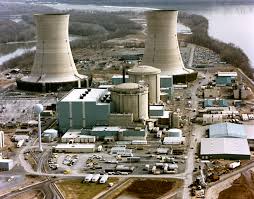
But let us go into the safety and environment aspects of nuclear power plants. There have been three major reactor accidents in the history of nuclear power generation . They are :
- Three Mile Island (USA , 1979)
- Chernobyl (Ukraine , 1986)
- Fukushima (Japan , 2011).
Ten former Nobel Peace Laureates , including the Dalai Lama, Archbishop Desmond Tutu, and Rigobata Manchu Tum stated the following in an April 21 , 2011 open letter to 31 Heads of State whose countries are currently heavily invested in nuclear power production or are considering investing in nuclear power: ”Choose renewable energy over nuclear power :Nobel Peace Laureates to World Leaders::

On the twenty fifth anniversary of the Chernobyl nuclear disaster in Ukraine—and more than two months after the massive earthquake and tsunami that devastated Japan , it is time to recognise that nuclear power is not a clean , safe or affordable source of energy.
We are deeply indebted that the lives of people in Japan are being endangered by nuclear radiation in the air , in the water or in the food as a result of the breakdown at the Fukushima nuclear power plant. We firmly believe that if the world phases out its current use of nuclear power , future generations of people everywhere—and the Japanese people who have already suffered too much – will live in greater peace and security.
Radiation is not just a concern in a nuclear accident .Each link in the nuclear fuel chain releases radiation , starting with drilling for uranium ; it then continues for generations because nuclear waste includes plutonium that will remain toxic for thousands of years. Despite years of research , countries with nuclear energy programme such as the United States have failed to solve the challenge of finding safe and secure storage for spent nuclear fuel.
There are presently over 400 nuclear power plants in the world –many in places of high risk for natural disaster or political upheaval . These plants provide less than 7% of the world’s total energy supply .As world leaders , you can work together to replace this small amount of energy to move us towards a carbon-free and nuclear –free future.”
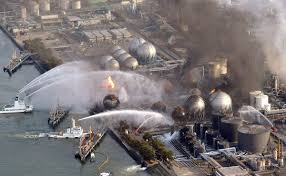
Though there was no death , injury or adverse health effects due to Three Mile Island accident , it shattered the public confidence in nuclear energy , especially in theUSA. As a result , there was a major decline in nuclear construction though the 1980’s and 1990’s .The lessons learnt were applied in a big way in all the nuclear power plants in the USA.
In Chernobyl accident , 30 firemen and operators were killed within 3 months. In addition , 28 persons died as a result of Acute Radiation Syndrome(ARS) within a few weeks of the accident. 19 more died subsequently between 1987 and 2004.The Chernobyl Forum report said that about seven million people are now receiving or are eligible for benefits as Chernobyl Victims. In what is referred to as his Testament –which was published soon after his suicide two years after the accident –Valery Legasov- who led the soviet delegation to the IAEA post-accident review meeting ,wrote,: After I had visited Chernobyl Nuclear Power Plant,I came to the conclusion that the accident was the inevitable apotheosis of the economic system which had been developed in the USSR over many decades. Neglect by the scientific management and the designers was every where with no attention being paid to the condition of instruments or of equipment.”
In Fukushima accident , there were no deaths from the accident but over one lac people were evacuated from their homes so that there was no radiation exposure. There have been over 1000 deaths from maintaining the evacuation. Evacuation orders were issued to people residing within 20kms of the site. Fukushima accident destroyed the public confidence in Japan in nuclear power, particularly in earthquake-prone regions having reactors. Japan has decided to meet its energy needs without relying on nuclear power and is now going for alternatives to nuclear power .Japan is building a network of 30 solar power stations , of 2MW each.
A disaster like Chernobyl or Fukushima , if it happens in a densely populated country like India , could have huge human , economic and environmental consequences, as had happened in the industrial disaster of Union carbide ,Bhopal. There have been mass protests in India against the French-backed 9900 MW Jaitapur nuclear power plant in Maharashtra. Though India has enacted 2010 Nuclear Liability Act which puts financial responsibility and compensation in case of a nuclear accident on nuclear suppliers, contractors and operators. But is it enough to make provision for financial compensation ? We just have to look at the precariously hanging electricity distribution lines in any city like Lucknow and ask whether we have the confidence in the maintenance of equipment and instruments of nuclear power plants ?Where does nuclear power fit in the culture of neglect and indifference among public sector employees in India ?And add to this the rampant corruption in public sector in supply of plants , materials and accessories. We need to think and re-think hard about our nuclear options and pay heed to the appeal of ten Nobel Peace Laureates against going in for nuclear power. India , which has lot of land and sunshine , may opt for cost-effective, cleaner and safer solar power , where location is also not at all critical.
Author:Shri Vidyanand Garg, a Retd IAS officer with 30+ years of experience is presently with CMS Schools (Policy & Operations). He has been working as a civil servant in India since 1980 and has worked in senior administrative positions in the state of UP, India in the fields of housing, infrastructure, forests, information technology, and industrial development. He has held portfolios like Chairman, UP Forest Corporation , Infrastructure and Industrial Development Commissioner, Chairman- UP Finance Corporation, Principal Secy- IT, Housing Commissioner-UP to name a few.
More from his guest posts:
Civil Services as a career – Be an IAS Officer of my Dreams
Unemployment – biggest challenge to Indian Democracy: Straight from a Bureaucrat Series


